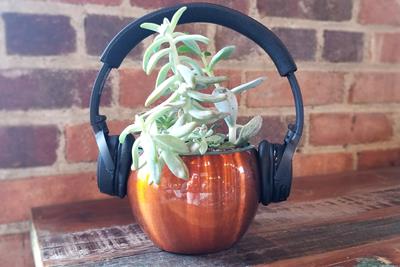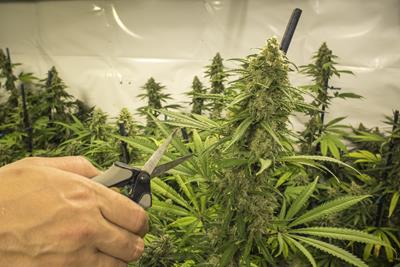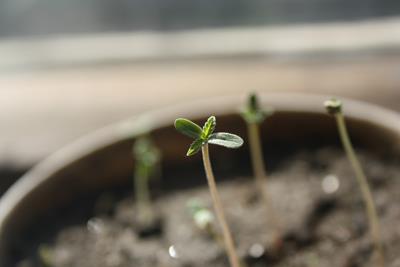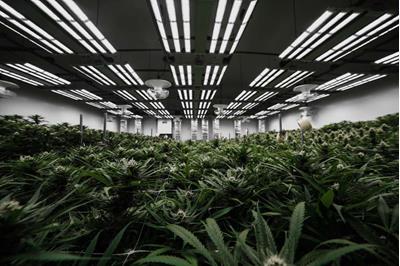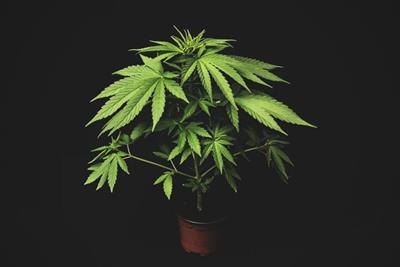
Saturday July 24, 2021
By Erin Hiatt
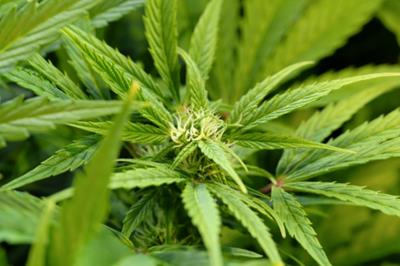 Growing
Growing
Growing cannabis can have a significant learning curve, especially for novice green thumbs. However, growing your own has many benefits, including being more affordable in the long run, is more convenient, provides a steady supply (especially important for medical cannabis patients), and allows you to do your own quality control to ensure sound growing practices and purity.
Nonetheless, not every grower has the time or interest in learning how to create an optimal set-up for cannabis grows, or the appetite to enact the appropriate stresses at the appropriate times. A typical cannabis grow can take anywhere from 4-5 months plus harvesting and curing, leaving many consumers to throw up their hands and just go to the dispensary.
But there is a solution to those problems, and that is autoflowering cannabis seeds that flower on their own after 2-4 weeks of growth. This is much less time than your standard cannabis plant and allows you to grow robust plants without having to babysit them.
Timeline for Growing From Autoflower Seeds
Growing autoflowers can be a great option for anyone who wishes to grow at home. They are compact — think a microgrow or a couple of plants on the patio — and grow well both indoors and outdoors. Medical cannabis patients who need a steady supply of cannabis and may not be well enough to travel regularly to a dispensary may find that growing autoflowering plants allows them better access to their medicine, though recreational consumers would benefit as well.
Say you’ve decided to plant some autoflower seeds. What should you expect? Because autoflowers follow fixed timing, you can expect a fairly predictable schedule.
- Weeks 1-3: the plants will begin their growing process. Expect to see some vigorous growth in week three.
- Week 4: healthy plant growth will really start to take off
- Week 5: some plants may start showing pistils
- Week 6: plants enter flowering phase
- Week 7: buds will start to develop
- Week 8: bud growth will continue to develop, growing fatter and denser
- Week 9: buds will start to show a mix of amber and white pistils
- Week 10: pistils continue to change from amber to red
- Week 11: autoflowers should be ready to harvest
Some growers may choose to wait until weeks 12 or 13 to harvest, but that is a matter of preference.
Autoflower Cannabis Seeds Explained
Sounds simple, right? But what exactly are these seeds? And how do they work? You’ve heard of sativa and indica, but have you heard of cannabis ruderalis? While it was once thought that ruderalis was a direct ancestor of sativa and indica, it is now thought to be its own, separate species.
Ruderalis is a rugged variety of the plant local to Central Asia, Russia, and Central and Eastern Europe. It is much smaller than sativa and indica, typically growing to about one and a half to two feet in height. It produces a smaller yield and lacks the needed cannabinoids to get you high. However, ruderalis does not require specific changes in light to grow and fares well regardless of region.

Breeders wishing to incorporate some of ruderalis’ characteristics have been using it for crossbreeding, especially for autoflowering. This includes ruderalis’ natural resistance to stress and disease, however, its most coveted trait is ruderalis' lack of requiring light cycles for development. In other words, crossbreeding ruderalis with sativa or indica creates a stronger plant that flowers by age, not by changes in light.
Autoflowers have come a long way since their introduction in the early 2000’s when they lacked flavor and potency. Today, they frequently rival or surpass the yield, aroma, and potency of feminized photoperiod strains. Even the most finicky consumer is likely to find autoflower seeds that have a range of potency, THC to CBD ratios, and terpene profiles.
Conclusion
As you can see, growing autoflowering cannabis is a great way to minimize some of the stress of growing, as well as cutting down the length of time it takes from seed to consumption. Though earlier iterations of autoflower seeds may have been lacking in quality when compared to their seasonal counterparts, progress in breeding has enabled autoflowers to produce some respectable buds.
Have you had success with autoflower seeds? Share your experiences in the comments!



